Research Activities
Research on Restoration Materials and Technologies
Research on Traditional Dancheong Pigment-Making Technologies and Quality Assessment
It is a fact that traditional Dancheong pigments have been replaced by artificial chemicals over the course of the country’s modernization, and that the pigment-making technologies have not been inherited or passed down. Therefore, it is difficult to use traditional pigments in cultural heritage restoration sites at present. The NRICH conducts ‘Research on Traditional Dancheong Pigment-Making Technologies and Quality Assessment’ to restore the traditional Dancheong pigment-making technologies and establish a foundation for the stable supply of traditional pigments to cultural heritage restoration sites. The 7-year project, launched in 2014, will be completed in 2020. Research being carried out under the project includes securing traditional pigment materials (natural minerals, etc.), producing traditional pigments using traditional methods, and presenting quality standards to be applied to cultural heritage restoration sites, together with conducting analyses of Dancheong materials that are still remaining in antique wooden Korean structures.

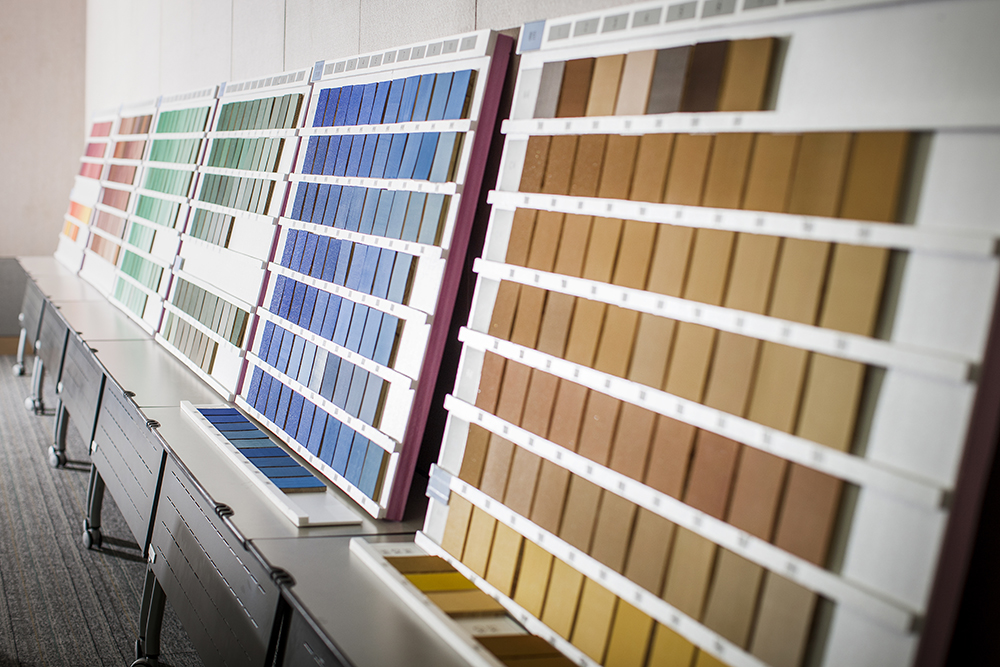
Research on the Patterns of Biological Damage on Wooden-Structure Cultural Heritages
Discussions are taking place worldwide about how to protect cultural heritages from climate change. In Korea, biological damage from termites and lichens, among other organisms, on wooden-structure cultural heritages is spreading nationwide, and consequently, comprehensive measures are required to preserve and manage these sites. To present a comprehensive way to preserve the country’s wooden-structure cultural heritage sites, research is underway that strives to analyze the patterns of biological damage on wooden structure cultural heritages and develop a biological damage forecast model that fully reflects the country’s natural environment, including its geographical characteristics.

Research on Quality Standard and Functionality Improvements of Korea’s Cultural Asset, Hanji
Washi (Japanese hand-made paper) and Xuan (traditional Chinese paper) have been added to the UNESCO Intangible Cultural Heritage list. Worldwide attention is now being paid to Hanji (Korean traditional paper) for its excellent durability and environmental friendliness. The research is designed to identify the scientific principles behind traditional Hanji-making technology, set up quality standards to be applied to the repair and restoration of cultural heritages, and expand the uses for Hanji through the differentiation of quality and production processes, depending on the paper’s purpose.
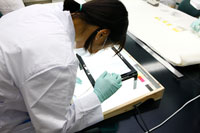
Research on Quality Improvements of Traditional Liming Materials
While undergoing the modernization process, Korea lost the production techniques for its traditional architectural materials, along with the relevant construction techniques. Therefore, it is difficult to apply traditional technologies to the repair and restoration of cultural heritages. Modern construction materials are being used for the repair and restoration efforts, and standards have yet to be prepared for the use of the materials. The research is aimed at studying the current status of liming materials used for the country’s existing architectural cultural heritages and identifying the mixing proportion and production techniques used with traditional liming materials through scientific analysis, among other methods. The research also seeks to strengthen the features of liming materials through the study of mixing proportions and accessory materials in order to develop liming materials that can be used for cultural heritages.
Research on restoration technology for the beeswax versions of the Annals of the Joseon Dynasty
Since 2006 we have been conducting research on restoration technology with the aim of developing methods of restoring the seriously damaged beeswax versions of the Joseon wangjo sillok (Annals of the Joseon Dynasty, National Treasure). After conducting a survey of the status of the damaged beeswax versions, research on the characteristics of their raw materials, and research on restoration and storage technology, we aim to establish comprehensive, systematic conservation measures.
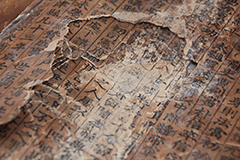 Restoration of china and earthenware using adhesives
Restoration of china and earthenware using adhesives
 Restoration of china and earthenware using adhesives
Restoration of china and earthenware using adhesives
R&D on restoration materials for ceramics and pottery
This research is focused on developing restoration the materials and technology required to scientifically restore ceramic and pottery heritages. We conducted research on the removal of pollutants from ceramics and pottery during the period 2009-2011, and have been researching and developing restoration materials since 2011. Our research targets synthetic resins and traditional materials as restoration materials. Based on research on the stability of synthetic resins and their potential application to cultural heritage artifacts, we aim to prepare the criteria for using synthetic resins and to develop adhesives using traditional materials for application in the work of conserving cultural heritages.
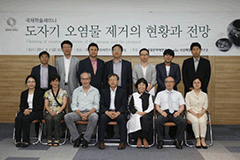 Modern drawings (Owned by the Railroad Museum)
Modern drawings (Owned by the Railroad Museum)
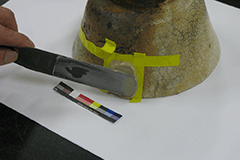 View of the interior of the railcar designed exclusively for the President(Owned by the Railroad Museum)
View of the interior of the railcar designed exclusively for the President(Owned by the Railroad Museum)
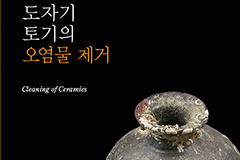 Manual for the Preservation and Management of (early) Modern Movable Cultural Heritage Objects
Manual for the Preservation and Management of (early) Modern Movable Cultural Heritage Objects
Research on methods of stabilizing re-corroded metal heritages
Certain metal heritages that underwent conservation treatment have been seriously damaged, but as yet there are no fundamental conservation methods with which to reverse the damage. This research has been under way since 2010 with the aim of devising methods of preventing re-corrosion. We will endeavor to identify the causes of corrosion, prevent corrosion, verify the chemicals and materials, and thereby offer more stable conservation measures.
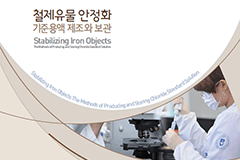 Modern drawings (Owned by the Railroad Museum)
Modern drawings (Owned by the Railroad Museum)
Research on the Preservation of Amber-made Heritage Objects
We have shed light on the chemical composition and degradation characteristics of amber in an effort to find a good way of preserving heritage objects made with amber. We presented high polymer materials suitable for the preservation of such objects based on the results of tests concerning the physical properties of materials for the preservation of such objects, as well as their preservation treatment and degradation characteristics.
Basic research on the conservation ethics code
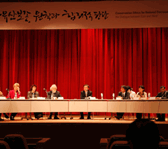
The Conservation Ethics Code is the basic job guideline designed to help the staff in making rational decisions on the process of conserving and restoring heritages by stage. As such, we are researching the enactment of such a domestic code as a basic job guideline.
Since the 1960s, the USA, the UK, Canada, the EU and Australia have all enacted and implemented a Conservation Ethics Code. For the first time in the Asian region, we have been conducting research on the conservation ethics code since 2010.
We held an international symposium on the ethics code in November 2010, and we are now trying to devise an ethics code that reflects the characteristics of the domestic conservation environment and heritages so as to provide a guideline that can be applied by domestic conservation officials in their work.
Practical application of cultural property conservation techniques
To promote the diffusion and utilization of heritage conservation technology, we sought to arrange the various conservation technologies and materials applied according to heritage materials - including metal, wood, paper and fabrics – as well as the related achievements, and to provide the outputs for use by the relevant institutes in their actual conservation activities.
This project was conducted from 2009 – 2011, and resulted in the publication of the relevant books on metal, wood, paper and fabric heritages.


